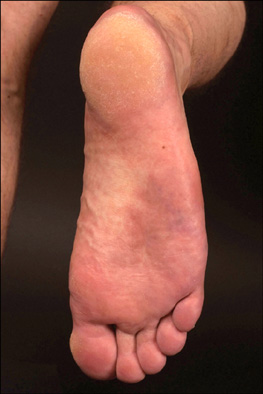Ann Dermatol.
2012 May;24(2):214-217.
Erythromelalgia and Livedo Reticularis in a Patient with Essential Thrombocythemia, Acquired von Willebrand Disease, and Elevated Anti-Phospholipid Antibodies
- Affiliations
-
- 1Department of Dermatology, Ruhr-University Bochum, Bochum, Germany. t.gambichler@klinikum-bochum.de
Abstract
- Essential thrombocythemia (ET) is a clonal stem cell disease characterized by isolated thrombocytosis and thrombohemorrhagic complications. We describe an unusual case of ET primarly presenting with skin symptoms including erythromelalgia and livedo reticularis (racemosa-type). Persistent thrombocytosis, bone marrow findings, JAK2 gene mutation, and markedly decreased ristocetin-cofactor activity were consistent with the diagnosis of ET and acquired von Willebrand disease. Elevated antiphospholipid antibodies were also found. The present case highlights the complex nature and diagnostic challenge of myeloproliferative disorders such as ET, which can involve multiple organ systems and often shows a variety of microvascular complications, coagulation anomalies, and autoimmune phenomena.
MeSH Terms
Figure
Reference
-
1. Brière JB. Essential thrombocythemia. Orphanet J Rare Dis. 2007. 2:3.
Article2. Tefferi A, Vainchenker W. Myeloproliferative neoplasms: molecular pathophysiology, essential clinical understanding, and treatment strategies. J Clin Oncol. 2011. 29:573–582.
Article3. Wolanskyj AP, Schwager SM, McClure RF, Larson DR, Tefferi A. Essential thrombocythemia beyond the first decade: life expectancy, long-term complication rates, and prognostic factors. Mayo Clin Proc. 2006. 81:159–166.
Article4. Buggiani G, Krysenka A, Grazzini M, Vašků V, Hercogová J, Lotti T. Paraneoplastic vasculitis and paraneoplastic vascular syndromes. Dermatol Ther. 2010. 23:597–605.
Article5. Tarach JS, Nowicka-Tarach BM, Matuszek B, Nowakowski A. Erythromelalgia--a thrombotic complication in chronic myeloproliferative disorders. Med Sci Monit. 2000. 6:204–208.6. Bauerschmitz J, Knop J. Cutaneous manifestations of essential thrombocythemia. Erythromelalgia, ischemic acrocyanosis, livedo racemosa. Hautarzt. 1995. 46:477–480.
Article7. Uthman IW, Khamashta MA. Livedo racemosa: a striking dermatological sign for the antiphospholipid syndrome. J Rheumatol. 2006. 33:2379–2382.8. Finazzi G. Essential thrombocythemia. Cancer Treat Res. 2008. 142:51–68.
Article9. Wieczorek I, MacGregor IR, Ludlam CA. Low proteins C and S and activation of fibrinolysis in treated essential thrombocythemia. Am J Hematol. 1995. 49:277–281.
Article10. Harrison CN, Donohoe S, Carr P, Dave M, Mackie I, Machin SJ. Patients with essential thrombocythaemia have an increased prevalence of antiphospholipid antibodies which may be associated with thrombosis. Thromb Haemost. 2002. 87:802–807.
Article11. Wandl UB, Nagel-Hiemke M, May D, Kreuzfelder E, Kloke O, Kranzhoff M, et al. Lupus-like autoimmune disease induced by interferon therapy for myeloproliferative disorders. Clin Immunol Immunopathol. 1992. 65:70–74.
Article12. Kumar S, Pruthi RK, Nichols WL. Acquired von Willebrand disease. Mayo Clin Proc. 2002. 77:181–187.
Article




